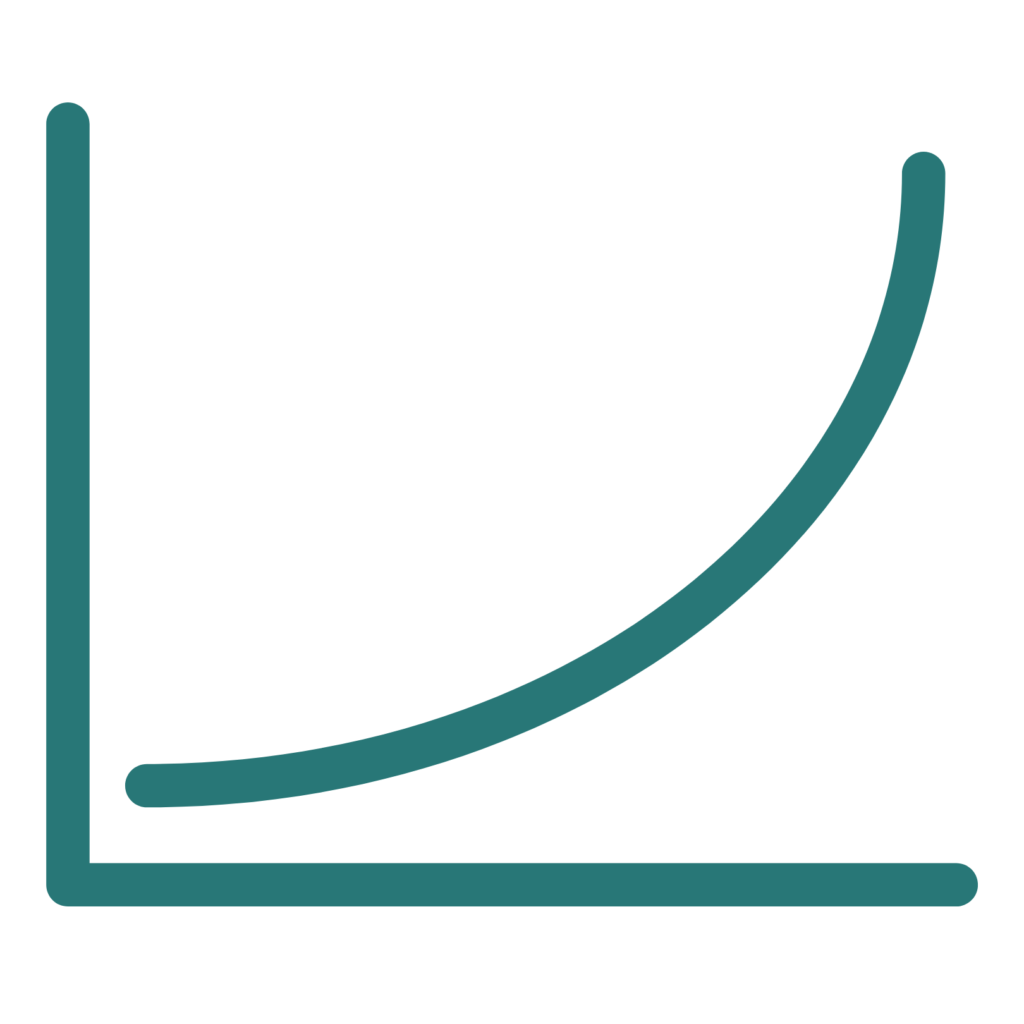Everyone wants to scale their business, but almost no one talks about how to practically do it.
That’s going to change today! I will give you a bunch of examples of how you can scale your business once the basics are set up—like real examples and triggers that you can start applying to your business as you read through this article.
As you’re here, I assume you’re interested in scaling your offer and turn that into a scalable business. Before you can scale your business, you need the basics covered.
Let me show you what I mean by that.
Listen on Apple: https://fastforwardamy.com/apple70
Listen on Spotify: https://fastforwardamy.com/spotify70
Listen on Google: https://fastforwardamy.com/google70
Ensure you have a baseline for scaling your business
Alright, it’s time to enter scale-up mode and be prepared; I’m not here to talk about the typical business advice that you can find in any book.
Today’s insights, tips, and actions are based on my own experience, coaching thousands of clients and scaling to multiple 6 and 7-figure businesses. And I promise you; it will work if you follow along.
Now, we all start somewhere. 60% of us begin with a service, while 40% start with a physical product. No matter which category you fall into, you need to make sure your business is set up, you’re already turning a profit, and that you have some time left over to work on scaling your business.
Ehhh hello, excuse me Amy: “Time left over?!”
My guess is this is you right now asking me that… and you’re right. Who the f*ck has any time left over? Not a lot of people.
We’re all overworked with not enough hours in a day and days in a week. BUT if you’re determined to scale your business, you need to be able to put in the effort and take one step back to take 10 steps forward.
We need to put in the groundwork to go for the hockey stick-shaped profit curve and ultimately get a lot more output from putting in the same effort. In a nutshell, that’s what scaling is all about.

Service vs. product offers: both are scalable
Now, whether you’re running a service or product business, I want to ensure you have the potential to scale.
Let’s look at a few examples.
A psychologist is booked with clients. She’s really happy, but overworked, and every month the practice is hitting the same ceiling. Sometimes, there are even not enough spots for clients to book. She’s hit a plateau for her business.
If you’re like this; fully booked with no time left to work on your business, you NEED to make time. Block time in the morning and adjust your calendar.
On the other side, there’s someone with a product who’s doing everything by himself, from marketing to cleaning lady, setting up the website, packing orders, delivering packages, and so on.
If you own a product business and currently doing everything on your own, look for a fulfillment center, outsource regular day-to-day tasks that someone else can easily do.
Whether you run a service or product business, you need to MAKE TIME and be OK with taking a step back in revenue or profit to make space for you to start working on your scalability and the strategy behind it.
But remember, first things first, your core offer needs to be profitable.
Have a scalable offer
Before even thinking about scaling, you need the baseline in place AND, of course, a scalable offer.
Scaling requires strategy, insights, and looking at what can be done rather than looking at how we did it in the past.
A scalable offer means that your costs don’t necessarily go up along with it when you sell more of it.
For instance, if you trade your hours for money, that’s not scalable. You can’t keep scaling because you can never go beyond 24 hours in a day.
But what is a scalable offer, then? You can have
- Physical products
- Digital products (e.g., ebooks, courses, or programs)
- People working for you offering the service (e.g., running a social media agency, you find clients and other people execute for you)
To make it more tangible, let’s use digital products as an example to scale your business.
I love courses, and I would recommend you go for a course. Start by looking at 1) what clients usually come in for and 2) the basic steps you do when working with clients. You can translate this knowledge into a course and start selling.
Look at your funnel: traffic vs. conversion
What’s next? It’s time to look at the funnel: what traffic comes in on one side and how many sales and conversions come out on the other side.
To improve your funnel and scale your business, we can focus on two things:
- Optimize what happens in the conversion engine to create a higher percentage of people converting.
- Increase the traffic that is coming into the funnel.
Let me show you an example of the birthday sale we did for my 28th birthday.
I usually don’t offer low-ticket products, but once a while, it’s an excellent tool to use to get people through the door and give them a pleasant experience with your brand before they commit to buying your high-ticket offers.
Last year, for my 27th birthday, we sold €27 products and a €72 bundle product.
This year, we sold €28 products and a €250 bundle product.
While there was no real strategy behind the birthday sale last year, we still sold for around 2300 euros. But guess what? This time we put a little more effort into the strategy, with the goal being to increase our average order value.
We now sold for 10,900 euros instead, in other words, 4-5x as much last year. What happened was that our average order value increased from 47 euros to 67 euros on average for any customer. This is called your ‘AOV’.
Looking at the funnel, we didn’t increase the traffic going in, but we still made sure to make more money because we scaled the order value.
Recap: an easy way to scale is to sell more expensive products, sell more at checkout, or upsell, so the people who are already in your funnel will ultimately convert at a higher average order value.
Get started on your own: traffic vs. conversion tips
Although we sold more, our conversion rate was 9%, which was down from last year’s 13%. Why? We didn’t optimize the funnel.
To avoid you making the same mistakes as us, let’s look at some conversion tips you can use to increase the conversion percentage in your funnel.
Conversion tips
- Tweak your landing and sales pages: you can have a sales page with text only, or you can have one with text, videos, great branding, and where everything is optimized for conversion.
- Split test your subject lines: the subject line determines whether or not people open your emails. Always write out 30 subject lines, pick 2, and choose the A/B testing option in your email service provider (ESP)—most tools offer this option.
- Improve copywriting: tweak your copy to be more engaging, improve your story by talking about the problems your customers experience.
- Minimize the steps to buy: limit the actions (or doorways) that customers must go through to make a purchase. Every time you include another link or another page, people will fall off, and the result is clear: you will end up with fewer conversions.
- Use clear call to actions: test different call to actions and try placing them in different sections on your landing page, include a lot throughout, or have fewer buttons and put them lower down the page.
Before you start implementing these conversion tips, you first need to know if your offer is converting. If it does, GREAT. Then it’s time to optimize your funnel and test out what converts best.
Traffic tips
On the other end of the funnel, we have everything that has to do with traffic.
Here we look at increasing the number of people that are exposed to our offer through advertising, social media, referrals, affiliates, and more.
- Use advertising: whether you advertise on Instagram or Facebook, or any other platform, it can be a great way to increase traffic to your site and sales page. Make sure to support any paid content with non-paid content. For instance, at the moment, we’re running ads for the podcast to increase downloads, but at the same time, we’re continuing to create value-packed content for each episode that organically drives people to listen.
- Create freaking awesome content: be found on Google through your blog content. This is a more long-term strategy but definitely worth the effort if you’re serious about growing traffic.
- Use more social media platforms: don’t stick to engaging with your own audience, but test out different platforms to reach even more people. For instance, during the birthday sale, we focused on my Instagram and email list only but could have tested out LinkedIn, Facebook groups, and pages, too.
- Extend your sales cycle: the more time I have, the more I sell, and that’s why I prefer a longer launch and sales time. For the birthday sale last year, we had 300 sessions in the shop during 3 days, and now we had 1600 sessions in the shop in 8 days.
Keep your eyes on the numbers
Now, to scale, you don’t always have to sell to more people; often, you can also sell more to the same people.
No matter what route you take, remember not only to spend a lot of time increasing traffic, getting many followers, and then stop there. You need to convert these followers into customers.
And to keep track of all your conversions and traffic, you should be keeping an eye on your numbers. Numbers are SO important.
When starting out, I know it can be difficult because you don’t have many numbers to work with but go with what you have. For instance, if you host a webinar, take note of
- How many sign up
- How many attend
- How many buy during the webinar
- How many buy after the webinar
You can easily gather these stats, and over time, you will have a solid stack of numbers that you can use to optimize conversions even further and finally scale your business.
That’s it for now. Hopefully, this has left you inspired and triggered you to see what you can do to scale. Before you go, keep these 4 key takeaways in mind:
- Take a step back to make time to work on your business
- Don’t wait to create your first digital product
- Work on your traffic and conversion engine at the same time.
- Once you have evidence your engine works, tweak stuff here and there to keep building your audience and fill your pipeline with new prospects.
Watch this episode on YouTube or listen via iTunes, Spotify, or wherever you get your podcasts, and search for episode 70 of The FastForwardAmy Show.
If you're ready to really scale your business, and you've had it doing everything on your own, you can register for my free (Dutch) Hoe Schaal Je Jouw Bedrijf webinar in which I teach you the 7 steps to growing and scaling your business using my very own Wheel of Scalability. Discover how you can get more results while costing you less time and energy. (yes, you read that right!)
After this webinar, you
- Know how your current efforts will generate more revenue.
- Can create a business that keeps running even when you're not working
- Will know how your business can work for you, not the other way around
Register here: www.fastforwardamy.com/schaaljebedrijfwebinar



Leave a Reply